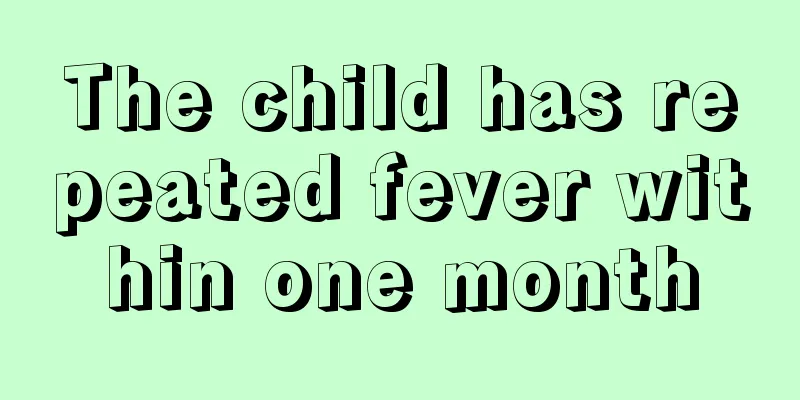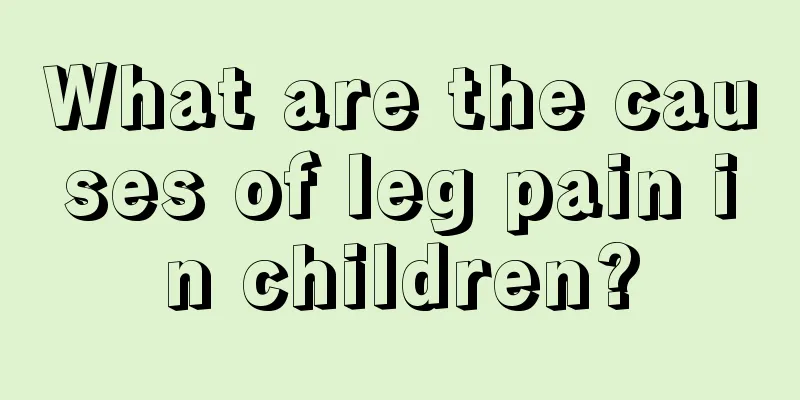The child has repeated fever within one month

|
Nowadays, most colds are caused by bacteria. Babies are young, do not know how to maintain hygiene, and have poor resistance, so they also become a group that is prone to colds. There is no need to worry too much if the baby has a minor cold, but if the baby continues to have a fever for a month, parents need to be very careful and take the baby to the hospital for treatment in time. But what is the cause of recurring fever? 1. Non-infectious fever: It is not caused by various infectious diseases. It is caused by sterile substances or various inflammations acting on the body temperature regulation center, dysfunction of the body temperature center, or various reasons causing excessive heat production and reduced heat dissipation, resulting in a body temperature exceeding the normal range. 2. Fever of unknown cause: The broad concept of fever of unknown cause refers to all people with fever of unknown cause. However, the narrow concept of fever is still used clinically, that is, fever of unknown cause. Fever persists for more than 3 weeks, with body temperature above 38.5℃, and a clear diagnosis cannot be made after detailed medical history, physical examination and routine laboratory tests. 3. Central fever: refers to the fever caused by abnormalities in the body temperature regulation center due to lesions in the central nervous system. Before diagnosing it, fever caused by systemic or local inflammation and other causes of fever should be strictly excluded. Intracranial diseases accompanied by fever are mostly critical cases, and the fever in most patients is caused by intracranial inflammation, lung infection, and urinary tract infection. For those with unexplained moderate fever whose source or cause of infection cannot be found at the moment, it should not be easily assumed to be central fever. Systemic or local infection causes should be repeatedly sought to exclude them, and attention should be paid to drug fever and other causes of fever. 4. Persistent fever: When the oral temperature is higher than 37.3℃ or the rectal temperature is higher than 37.6℃, and the change in one day exceeds 1.2℃, it is called fever. According to the degree of fever, it can be divided into the following clinical grades: low fever 37.4℃~38℃, moderate fever 38.1℃~39℃, high fever 39.1℃~41℃, and ultra-high fever above 41℃, which lasts for more than 4 weeks, is persistent fever. |
<<: What is the reason for the child's repeated high fever?
>>: What to do if a seven-year-old child has repeated fevers
Recommend
Newborns poop and fart very hard
Because the gastrointestinal tract of a newborn i...
What to do if your child has acute sinusitis
Sinusitis is a disease with a high prevalence and...
What are the reasons why children often have hoarse voices?
Hoarseness is very common in daily life. I think ...
What are the reasons for children's lower eyelid swelling?
Children are the treasures of their parents, and ...
Normal heart rate for 6-year-old children
A person's heart rate should be within the ra...
What to do if a child has pimples on his eyelids
During the development and growth stage of childr...
What should I do if my baby has poor cognitive abilities?
Children will face many problems in the process o...
What happens if the child doesn't want to eat?
Whether a child’s diet is normal is directly rela...
How to treat children's rhinitis and nosebleeds
Children must pay attention to dietary adjustment...
What to do if your baby's nasal concha is swollen
The main causes of baby's nasal concha hypert...
What can children eat to improve their brain and memory?
Children are under great academic and competitive...
What to do if your 2-year-old baby gets heatstroke
When your 2-year-old baby suffers from heatstroke...
Caring for the growth of mentally retarded children
Mental retardation is not an insulting name, it i...
The baby's cough becomes worse the more medicine he takes
When many babies have a cough, their mothers will...
The causes of precocious puberty in children
Some children develop secondary sexual characteri...









